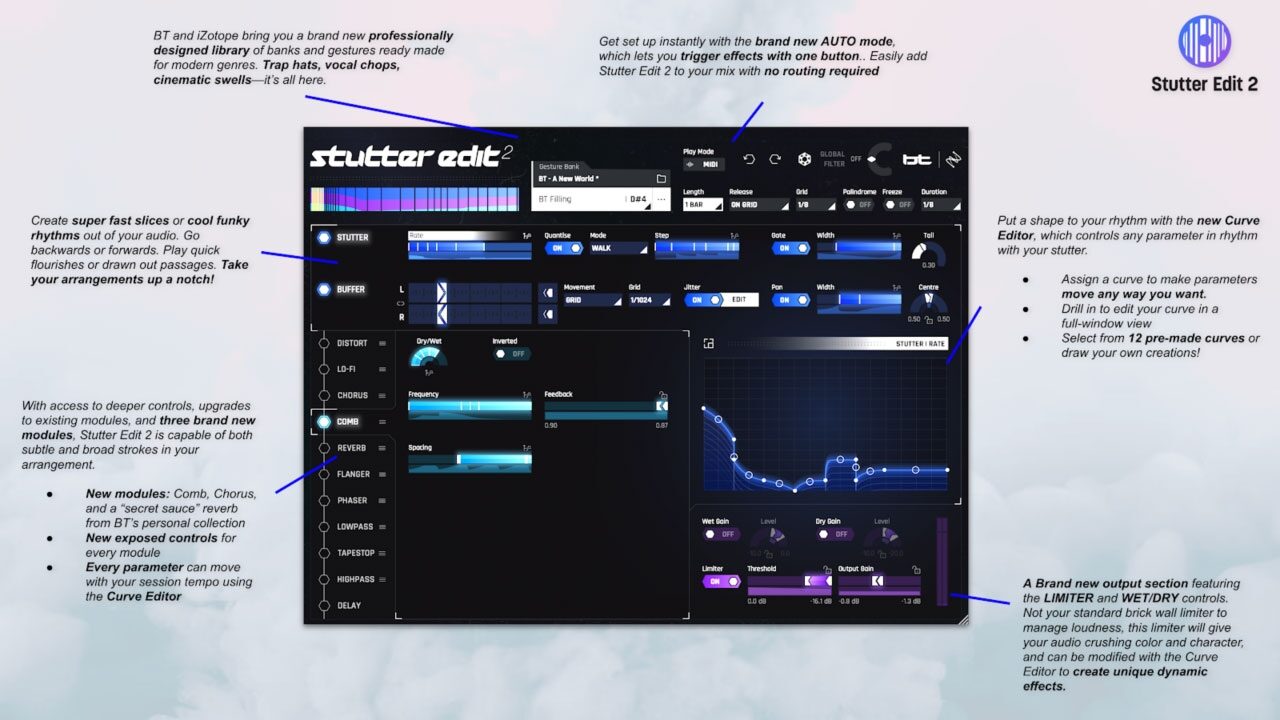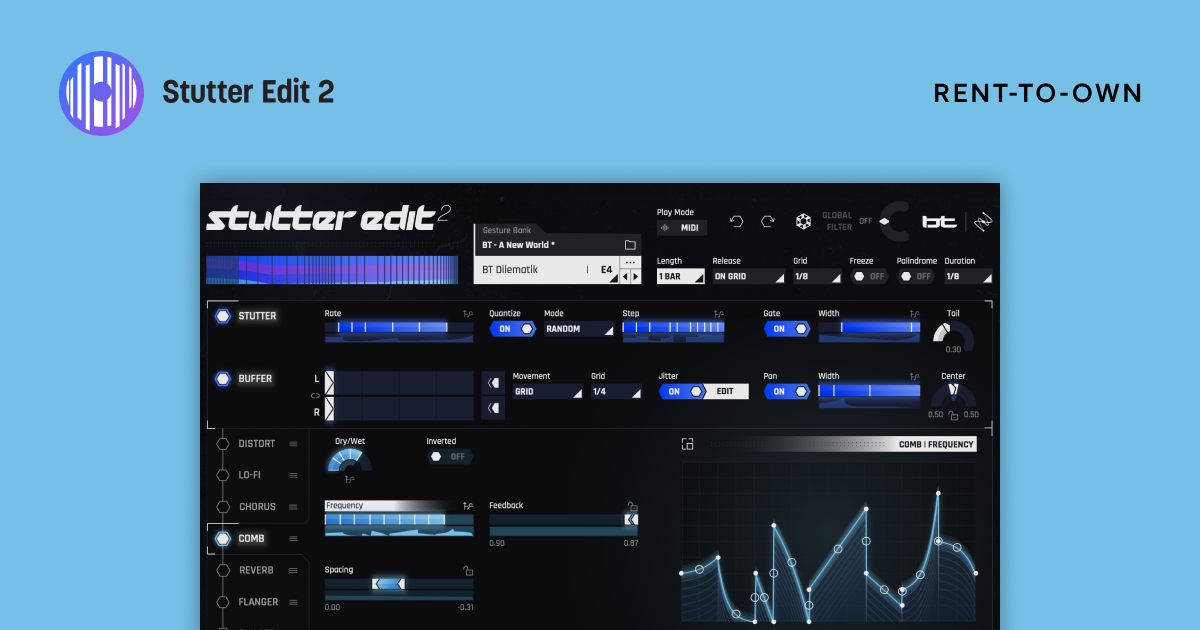

- #Izotope stutter edit latency how to
- #Izotope stutter edit latency software
- #Izotope stutter edit latency plus
He then moves onto the Comb filter and phaser, showing how to use them to create additional shaping and coloration. He then shows how Dry and Wet levels can be manipulated to bring effects in and out throughout a gesture.Īfter showing how the plugin is set up in Logic Pro, Rob explores the various filters in Stutter Edit, demonstrating how to create basic sweeps, more rapid LFO-like modulation and glitchy, stepped curves. Rob makes another gesture, showing how curve presets can be incorporated to create more complex shapes or LFO-like behaviour. Module 6 - Curve Presets and Dry/Wet Gain Controls Module 5 - Using Stutter Rate to Create a MelodyĪ quick gesture is created that uses Stutter Edit to make a melody out of some beats, showing how relevant MIDI notes can be selected on the stutter rate curve and then alternated to tune the effect to a song. Sticking purely to grid mode, Rob shows how changing the timing, range and direction affect the sound. Lesson 3 - Stutter Quantize & Gate - 10.19Ī detailed explanation of the stutter buffer, showing how it defines the nature of beat repeats. Lesson 2 - Gesture Release and Bank Locating - 11.30

Lesson 1 - Stutter Rate Curve and Gesture Length - 8.20 There’s also a look at global gesture controls determining length and release behaviour. Starting first with a look at how to vary parameters throughout gestures using their curve displays, Rob then moves onto other important stutter parameters such as quantise and gate. Making simple, static gestures (fixed beat repeats) with increasing speeds, to add basic stutters to a track. Module 1 - Overview & Setup in Ableton Live A guide to setting up the plugin in Ableton Live, along with some simple techniques for using presets to add interesting variation to an arrangement. There is also a guide to installing the accompanying Stutter Edit banks. Rob introduces the course, explaining the learning goals, as well as the materials that come with the tutorials. Check out the sample module for an example of the course content, which will give you a detailed insight into the plugin and how to use it to take your tracks to the next level!
#Izotope stutter edit latency plus
Signing up to the course gets you immediate access to over 4 hours of tutorials, all the presets made along the way, plus an additional bonus bank of presets to help add subtle touches or gnarly, twisted FX to your production. The course then concludes with a pair of more complex gestures that combine tape stop with stutter freezing, filters and delay. In the first half of the course, effects are mostly used in isolation, but as the tutorials progress, they are increasingly combined to create additional shaping, movement and colour.Īfter guiding viewers through some other key effects, including distortion, lofi, reverb and delay, the bonus bank is demo’d, explaining how it was put together and the best ways to use it when producing or performing.

He then moves onto the filters, making an assortment of gestures, from simple sweeps, to custom LFO modulation, stepped filtering, comb filtering and also phaser application. To demonstrate the versatility of the stutter section, Rob makes a pair of contrasting gestures, one that uses the Dry/Wet gains to create stutters on certain beats and another that turns a beat into a melodic line. The Buffer is then incorporated, showing how it changes the nature of a stutter and allows different stereo effects and sample reversing to be introduced. Simple beat repeats are created to start with, which eventually evolve into more complex stutters with shifting rates and gate lengths.
#Izotope stutter edit latency software
The course begins with some simple techniques for using the software presets to add fills to a track, before starting to explore one of the key areas of the plugin, the Stutter section. On this 4-hour course from Producertech Senior Tutor Rob Jones, you’ll be guided through the software and taught everything from basic usage to more advanced effects progression design.

IZotope’s Stutter Edit 2 is an invaluable tool for creating everything from simple beat repeats to crazy sonic mangling, which help to add interest and variation to any performance or production.


 0 kommentar(er)
0 kommentar(er)
